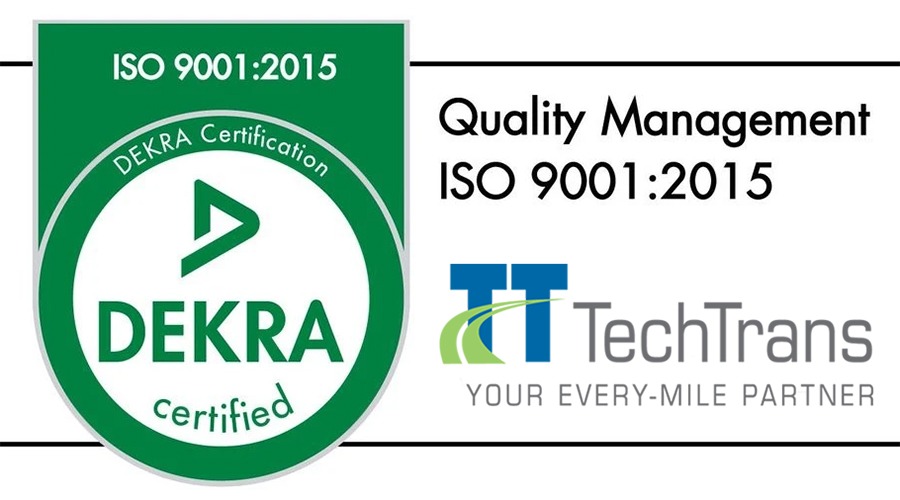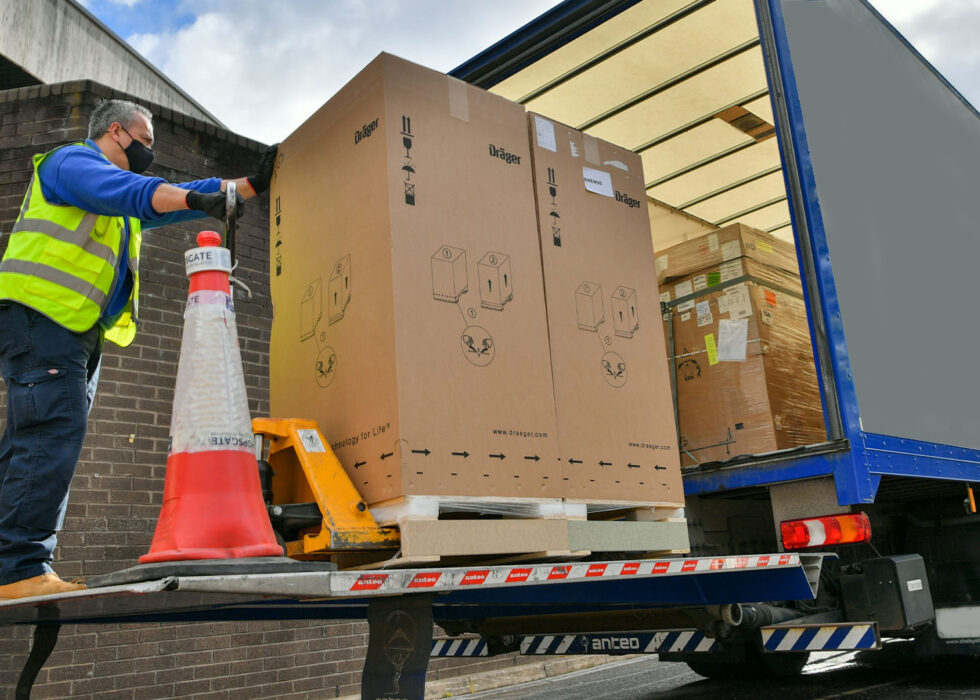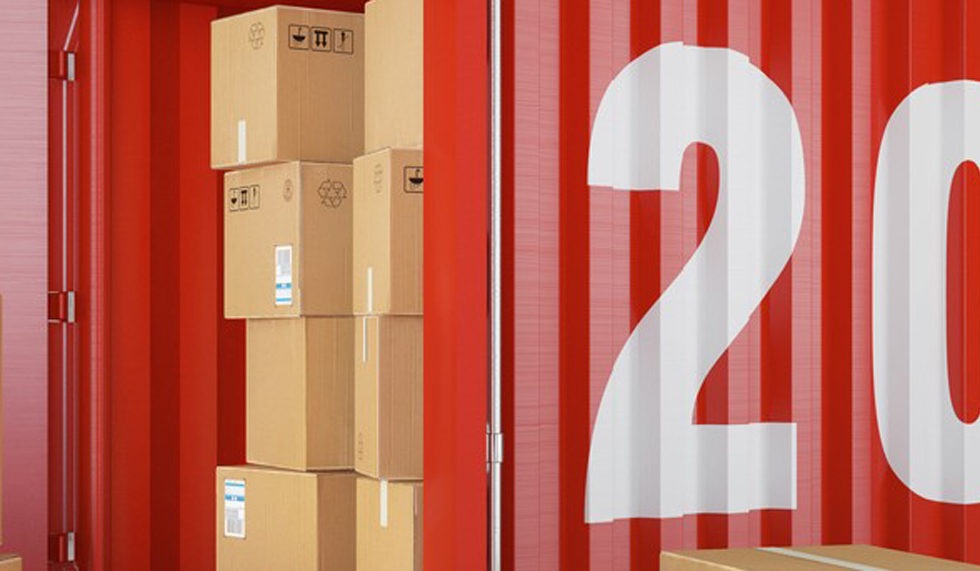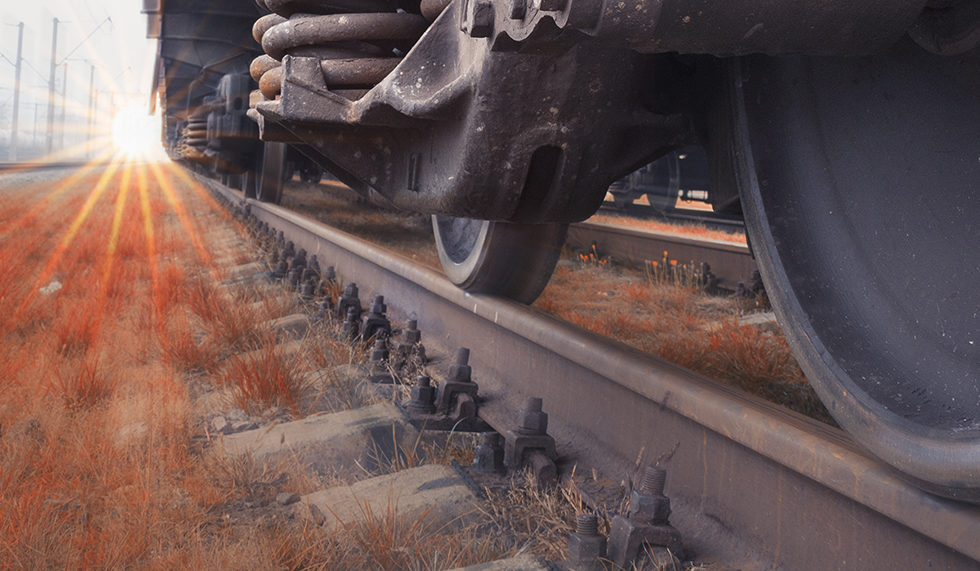Why 3PL Healthcare Logistics Providers Are Critical to Supply Chains
In healthcare, 3PL Healthcare Logistics is not just about transportation—it’s about precision, safety, and reliability. When the cargo includes sensitive medical and laboratory equipment, delays or mishandling can result in more than financial losses; it can interrupt essential patient care or delay critical diagnostics. Third-party logistics (3PL) providers are a vital link in the healthcare supply chain, offering the expertise, infrastructure, and compliance focus required to manage high-value, highly sensitive medical and life sciences equipment.
Transporting Sensitive Equipment Requires Specialized Capabilities
Medical and life sciences facilities rely heavily on a wide range of sophisticated equipment—from vaccine refrigerators and centrifuges to C-scan machines, incubators, and portable diagnostic systems. These assets are often bulky, fragile, and technologically complex. They require custom crating, shock-resistant packaging, and sometimes even white-glove delivery and installation.
A qualified 3PL partner brings the tools and procedures to manage these requirements, ensuring that equipment arrives not only on time but fully operational. This may include liftgate-equipped vehicles, climate-controlled transport, and personnel trained to handle delicate, high-value instruments.
Compliance and Coordination in Every Move
Sensitive medical equipment doesn’t just need to arrive—it needs to arrive in a state that meets operational and regulatory expectations. 3PL providers manage complex delivery protocols that account for environmental controls, documentation, and coordination with facility staff.
For example, delivering a new diagnostic imaging machine to a hospital involves more than transport. It often requires coordinating with construction crews, securing clearances, navigating elevator and power access, and sometimes providing on-site assembly. In life sciences labs, even relatively small equipment—like refrigerated centrifuges or PCR machines—must be moved without disrupting ongoing research or compromising calibration.
3PLs that specialize in healthcare logistics maintain compliance with safety standards, maintain audit trails, and minimize downtime by aligning deliveries with customer workflows and infrastructure constraints.
Flexibility for Changing Needs
Healthcare organizations are constantly evolving—whether expanding lab capacity, replacing outdated equipment, or responding to emerging health trends. 3PL providers offer the flexibility to scale distribution and installation services accordingly. This agility is essential not only for major hospital systems but also for decentralized clinical trial sites, diagnostic labs, and outpatient centers that increasingly demand advanced equipment and fast, reliable service.
For instance, as point-of-care diagnostics expand, clinics across the country require equipment like compact analyzers or refrigerated storage units to be delivered and set up in days, not weeks. A 3PL experienced in healthcare can pivot quickly to support these demands without compromising safety or compliance.
Inventory Management for Capital Equipment
Unlike consumables, medical equipment typically represents a significant capital investment. Mismanagement of inventory—whether in storage, in transit, or during returns—can lead to avoidable costs. 3PL partners help healthcare organizations track assets throughout the lifecycle, offering secure warehousing, scheduled maintenance logistics, and reverse logistics for decommissioned or returned equipment.
This visibility is especially critical in life sciences, where clinical equipment may rotate across trial sites, or where specific calibration and handling protocols are required for storage and redeployment.
Supporting Patient Care Through Operational Excellence
Ultimately, when the right equipment is delivered to the right place in the right condition, healthcare providers can offer faster diagnoses, better monitoring, and more efficient care. By entrusting complex equipment logistics to 3PL experts, hospitals and labs can reduce the burden on internal teams and maintain focus on their clinical mission.
In medical and life sciences logistics, the delivery of a C-scan machine or an incubator is not a simple shipment—it’s an operational event. A specialized 3PL understands that, and brings the logistical precision needed to make sure that vital technologies are always in the right hands, at the right time.
Technical Transportation, Inc. Achieves ISO 9001:2015 Certification through DEKRA
FOR IMMEDIATE RELEASE
Technical Transportation, Inc. Achieves ISO 9001:2015 Certification through DEKRA
Certification underscores commitment to quality management and customer satisfaction
Dallas, Texas – March 18, 2025 – Technical Transportation, Inc. (TechTrans), a leader in specialized transportation and logistics solutions, is proud to announce that it has achieved ISO 9001:2015 certification through DEKRA Certification, an internationally recognized independent certification body.
ISO 9001:2015 is a globally recognized standard for quality management systems, focusing on consistent processes, continual improvement, and customer satisfaction. This certification confirms that TechTrans has implemented a quality management system that meets the rigorous standards set by the International Organization for Standardization (ISO).
“Achieving ISO 9001:2015 certification is a significant milestone for TechTrans,” said Len Batcha, CFO/President at Technical Transportation, Inc. “This accomplishment reflects our unwavering commitment to providing the highest quality services to our clients and continually improving our processes to meet and exceed customer expectations.”
The certification process involved a comprehensive audit of TechTrans’ quality management system by DEKRA Certification, assessing various aspects including process management, customer focus, and continuous improvement initiatives. Earning this certification demonstrates TechTrans’ dedication to maintaining excellence in its operations and services.
“We are proud to have partnered with DEKRA Certification in this endeavor,” added Batcha. “Their thorough evaluation and guidance have been instrumental in helping us achieve this prestigious certification, further solidifying our position as a trusted provider in the transportation and logistics industry.”
TechTrans remains committed to upholding the principles of the ISO 9001:2015 standard and will continue to enhance its quality management system to ensure the highest levels of service quality and customer satisfaction.
About Technical Transportation, Inc.
Founded in 1990, Technical Transportation, Inc. is dedicated to providing customized transportation and logistics solutions for manufacturers of specialized, high-value equipment. With a focus on precision, reliability, and customer satisfaction, TechTrans offers services that include specialized transportation, warehousing, and white glove delivery services for high-value, heavy-weight shipments. For more information, visit www.techtrans.com.
About DEKRA Certification
DEKRA Certification is an independent, internationally accredited certification body offering certification, audit, evaluation, testing, and training services across various sectors. Established in 1992 and headquartered in Stuttgart, Germany, DEKRA Certification operates in 28 countries, serving clients ranging from SMEs to large multinational corporations. For more information, visit www.dekra.com.
7 Reasons Medical Logistics are Crucial for Healthcare
Healthcare continues to be one of the most dynamic industries, with new advances and technologies coming on the scene every day. But getting these technologies and medical equipment to those who will benefit from it most is where medical logistics plays a crucial role. For 3PL’s with a specialty in medical and healthcare logistics, ensuring an effective and comprehensive program is more important than ever.
Medical logistics goes beyond just transporting medicines and equipment—it’s about saving lives. In this blog, we’ll explore why medical logistics is integral to the healthcare system, and how it plays an essential role in maintaining seamless operations.
1. Ensuring Timely Delivery of Essential Supplies
Timely delivery of medications, vaccines, and medical devices is crucial in healthcare. Delays can lead to compromised patient care, which is why efficient logistics are indispensable.
Without a robust logistics network, even the most advanced hospital facilities can find their operations stifled. This includes procuring essential items like biopsies, pharmaceuticals, and biological samples, along with equipment used for testing and diagnostics. An efficient logistics system ensures that these items are warehoused and delivered with precision, ultimately contributing to smoother medical procedures.
Moreover, having a reliable logistics partner is not just about meeting delivery windows; it’s about outmaneuvering the unpredictability that often accompanies healthcare demands. As we see here at TechTrans, sudden needs for critical equipment repairs underscore the necessity for a logistics partner that can respond swiftly, preventing any disruption to patient care.
2. Maintaining the Cold Chain
Certain medical supplies, such as vaccines, require precise temperature conditions. Medical logistics ensure that the cold chain is maintained from start to finish, preserving the efficacy of these critical supplies.
A disruption in the cold chain can render pharmaceuticals less effective or even useless. To avoid this, logistics companies incorporate state-of-the-art technology that includes real-time tracking systems to ensure products remain within the required temperature threshold throughout transit.
Beyond temperature control, having an efficient supply chain infrastructure is critical to meeting demand when needed. As we saw with the cold supply chain issue during the pandemic, a supply chain fraught with logistics challenges can make it difficult, if not impossible, for medical and pharmaceutical companies to get critical supplies and vaccines to consumers when it matters.
3. Optimizing Inventory Management
Efficient logistics systems help healthcare facilities manage their inventory better, ensuring that essential supplies are always in stock while avoiding excess that could lead to waste.
By leveraging logistics expertise, healthcare facilities can strike a balance between supply and demand. For instance, understanding how inventory fluctuations can impact costs enables facilities to adopt strategies that avoid stock-outs and overstock situations. As outlined by the Kaizen Institute, effective inventory, warehousing and distribution strategies can significantly reduce delivery times and mitigate costs associated with poor planning or lack of visibility.
4. Enhancing Patient Care and Safety
By ensuring that all necessary medical supplies are available when needed, medical logistics play a direct role in enhancing patient care and safety, allowing healthcare professionals to provide optimal treatments.
For example, the rapid distribution of Durable Medical Equipment (DME) like hospital beds and mobility aids can significantly enhance patient comfort and care, especially in home settings. The growth of home-based healthcare, as discussed in this DME Logistics Needs blog, underscores the importance of robust logistics solutions that are nimble enough to adapt to growing and diverse care environments.
5. Streamlining Costs through Efficiency
Streamlined logistics processes lead to cost savings by reducing delays, errors, and waste. This allows healthcare facilities to allocate resources more effectively.
Investing in a comprehensive logistics service eliminates the burden of managing warehousing spaces. As hospitals navigate fluctuating demands, outsourcing logistics allows them to pay only for the services they need, thus optimizing operational budgets.
6. Adapting to Technological Advancements
With the advent of technology such as AI and IoT, medical logistics continue to evolve, offering innovative solutions that enhance tracking, forecasting, and delivery processes.
Modern logistics tools provide unparalleled visibility into the supply chain, allowing healthcare providers to forecast needs accurately and respond proactively. Innovations such as real-time ambient condition monitors or use of Digital Twins technology assure stakeholders of product safety, built-in efficiencies and cost savings, and even compliance with regulatory bodies.
7. Supporting Disaster Response and Preparedness
In times of crisis, an efficient medical logistics system ensures rapid deployment of essential supplies and equipment, supporting emergency response efforts and disaster preparedness.
During disasters, the need for a swift medical response can be the difference between life and death. Logistics play a pivotal role by swiftly mobilizing resources where they are most needed. A proactive stance taken in logistics planning can greatly improve the effects of unexpected strains, and allow a timely logistics response to significant crises and challenges.
In the end, having a comprehensive view and real-time management of products and equipment in the healthcare supply chain is crucial to effective medical logistics and overall improved healthcare.
The Role of Comprehensive Logistics in Modern Industry
In our modern, globally connected era, comprehensive logistics has emerged as a crucial component for success. Whether it’s ensuring timely delivery or optimizing supply chains, understanding the full scope of logistics can give a competitive edge. Let’s explore how logistics plays a vital role in modern industry.
Understanding Comprehensive Logistics
Comprehensive logistics encompasses the complete management of the flow of goods, services, and information between the point of origin and consumption. This holistic approach involves not only the physical movement of products but also the coordination of various logistical components such as transport, warehousing, and inventory management. The goal is to satisfy customer requirements efficiently and economically.
Integrated logistics solutions are becoming a fundamental part of this strategy, as they allow businesses to address logistical challenges with innovative and sustainable solutions. This approach significantly influences a company’s ability to stay competitive in an ever-evolving market by reducing redundancies and supporting seamless operations.
Modern industry has witnessed a seismic shift towards comprehensive logistics due to numerous factors, including globalization and technological advances. Integrating the latest technologies like blockchain, IoT, and artificial intelligence is vital in logistics management by enhancing transparency, accuracy, and efficiency. For instance, automation and digital tracking systems provide real-time data, minimize errors, and streamline processes that were otherwise cumbersome or prone to delay. With these innovations, companies can focus not just on moving products but ensuring a robust strategy that integrates multiple logistics processes into one cohesive system.
One key benefit of comprehensive logistics is the reduction in total cost of installation and delivery as highlighted by TechTrans’ solutions. Streamlining logistics through a single-provider minimizes coordination complexities and hidden costs associated with managing multiple contractors. This one-stop-shop approach captures how businesses can tap into economic efficiencies while maintaining control over logistics performance metrics. By tying all logistical components together, companies can offer predictable and scalable solutions that are instrumental in tackling complex global supply chain challenges.
Enhancing Supply Chain Efficiency
Effective supply chain management stands at the heart of successful logistics strategies, driven by the need to enhance the speed and reliability of product delivery from manufacturers to consumers. By streamlining the various processes involved, companies can improve efficiency, reduce lead times, and meet higher customer expectations.
For many businesses, adopting strategic end-to-end supply chain solutions has proven advantageous, as they mitigate risk, optimize operations, and offer significant cost savings. These integrated systems consolidate resources, facilitating better decision-making and adaptation to market fluctuations.
To further improve supply chain efficiency, companies are also investing in digitization and automation, addressing communication challenges inherent in handling multiple suppliers. In practice, this shift translates to less downtime, improved supply chain transparency, and the ability to track every movement of goods in real-time. This not only ensures efficient handling of resources but also nurtures strategic partnerships and builds a resilient supply chain that can withstand external pressures, whether economic or environmental.
The Impact on Cost Management
Logistics plays a pivotal role in controlling costs across the supply chain. The efficiency gained from well-structured logistics systems translates into significant savings for businesses by optimizing routes, consolidating shipments, and utilizing the latest technology to anticipate and react to inefficiencies. Implementation of integrated logistics approaches reduces redundancies and promotes cost-effective delivery mechanisms. By migrating to holistic management solutions, companies unlock the potential for resource optimization that amplifies their competitive edge.
In many cases, particularly in industries fraught with driver shortages, logistics reforms present an answer to soaring transportation costs, while also addressing service continuity. By tapping into non-asset-based logistics providers–such as TechTrans–which have the flexibility to access various providers, organizations can sidestep the pitfalls associated with internal shortages and capitalize on best-in-class policies. This not only helps fill logistical gaps but looks towards more sustainable and autonomous solutions for long-term cost management and operational effectiveness.
Ultimately, leveraging comprehensive logistics tools provides organizations with a total view of their supply chain, enhancing decision-making to avoid unnecessary expenditures. Insights derived from data analytics empower teams to anticipate demand, optimize stock levels, and efficiently allocate resources. This is key in not only sustaining but enhancing productivity across sectors, allowing companies to thrive in an increasingly competitive global market.
Sustainability in Logistics
With environmental concerns on the rise, logistics is at the forefront of implementing sustainable practices. This shift is driven by both corporate responsibility and market pressure to reduce carbon footprints and promote eco-friendliness. The transition towards sustainable logistics strategies includes processes for optimizing fuel efficiency, the adoption of electric vehicles, and green warehouse facilities. Such initiatives significantly lower emissions and align logistics operations with broader environmental goals—strategies that are also attractive to stakeholders who prioritize corporate sustainability governance.
Besides environmental benefits, sustainable logistics yield socio-economic advantages by creating a resource-efficient ecosystem that supports long-lasting business growth. The integration of green technology within logistics practices, such as renewable energy solutions and energy-efficient equipment, carries commercial incentives by reducing costs and increasing the value perception among customers and partners. Companies committed to sustainability not only future-proof their operations but also lead the industry in setting new standards for innovation-driven logistics solutions.
As logistics evolves, it is clear that sustainable practices will play an increasingly central role. The industry is gradually making strides toward a future where human and environmental health are at the forefront of operational design.
Future Trends in Logistics
As technology evolves, so does its application in logistics. The rise of artificial intelligence (AI) continues to refine logistics operations, offering predictive analytics and real-time decision-making capabilities that optimize supply chain performance. AI-driven logistics solutions facilitate data assimilation and enable firms to anticipate challenges before they arise, ensuring seamless integration across all logistical nodes. The expanding role of AI marks a transformative phase for logistics, emphasizing precision and agility in fulfilling complex consumer demands.
Furthermore, blockchain technology holds promise for ensuring transparency and security within supply chains. Its ability to provide immutable records and facilitate trust among participants is paving the way for smarter and more secure logistics practices, minimizing potential fraud and error across all transaction layers in an organization. As these technologies mature, the logistics landscape is braced for change, with these tools propelling the industry toward greater levels of trust, accountability, and operational fluidity.
Embracing Logistics for Future Success
Comprehensive logistics is undeniably a backbone of modern industry. From optimizing supply chains to embracing sustainable practices, businesses that harness the power of logistics can expect enhanced efficiency and competitive advantages. As the global supply chain continues to evolve, the importance of efficient and cost-effective logistics management will only grow.
Supply Chain and Logistics Trends We Expect in 2023
By Len Batcha, CFO/President
Technical Transportation, Inc
As we end 2022 and head into 2023, it seems like we’re in a fog. It’s difficult to develop a strategic plan based on the current inflation and economy, so it’s equally hard for companies in the supply chain and logistics industries to make concrete predictions and decisions.
However, based on what we can indeed see through these murky times, we can note several trends that companies should consider as they begin the new year.
Uncertainty Will Remain
The current uncertainty and apprehension will likely follow us into 2023, largely due to uncertainty in the economy, which is driven by record inflation and high fuel prices.
In addition, now that the midterm elections are behind us, there are questions about potential policy changes that could affect the overall economy and the supply chain specifically. Those will begin to take shape in the first half of the new year.
Perhaps there’s a bit of good news despite the uncertainty, as consumer spending has grown again this past holiday season, although not at the torrid pace we saw in recent years. In early November, the National Retail Federation forecasted that overall retail sales would grow 6-8% this season, compared to a growth rate of 13.5% last year.
Following a more robust than anticipated Black Friday/Cyber Monday, the organization noted that its growth prediction was on target. At the end of the season, Mastercard data confirmed the forecast, saying retail sales grew 7.6%.
Amazon Announcements a Bellwether?
That good news was contrary to Amazon’s announcements in Q4 2022, when the retail giant shared plans to lay off more than 20,000 employees.
In addition, Amazon Founder Jeff Bezos advised consumers to hold off on purchasing big-ticket items such as cars and appliances during the 2022 holiday season amid growing concerns about a potential recession in 2023.
These announcements, coming during the busiest time of the year in retail, tell us that Amazon is concerned about consumer spending and is cutting its own costs to remain profitable.
Could these moves be a potential bellwether for things to come in the supply chain and logistics spaces as well? We think it’s something to keep an eye on in 2023.
Supply Chain Issues Will Still Exist
There are still supply chain shortages with certain products, especially among big-ticket items such as automobiles, trucks and SUV’s. That is a concerning trend for the entire industry, and one that we hope will improve in 2023.
The good news is that supply chains in some vertical industries, particularly the medical and medical device spaces (where TechTrans has a core competency), are expected to remain strong in 2023.
That said, those industries may face supply shortages as well, which could delay the release of products, but not to the point where it would keep manufacturers in those industries from having a potentially strong 2023.
Election Impacts
The U.S. elections in November 2022 yielded a new crop of politicians, with a pretty stable Senate but a turnover in the House of Representatives slated for this January. Overall, we don’t expect big changes nationally.
On the state level, however, we witnessed stronger division and polarization, where “red” states got redder and “blue” states got bluer. That could potentially result in varying legislation from each state and companies having to adjust to policies and economies on a more localized level.
Emphasis on Quality Assurance and Control
Finally, we believe that quality assurance and control will play a bigger role in the supply chain and logistics industry in 2023. Many companies are evaluating their data and processes to find new ways to boost profitability by ensuring quality and efficiency.
That includes recruiting new talent to serve as quality liaisons between sales and operations to ensure that the customer experience is optimal. It also means meeting and exceeding quality standards for specific industries, whether it’s FDA regulations or ISO standards.
Though the crystal ball is not yet clear for the coming year, we do expect some uncertainty in the market, as well as swing toward operational adjustments that will positively impact the bottom line. If you need support optimizing your supply chain, we’re here to help.
Here’s wishing you and your companies a successful and prosperous 2023! Let us know how we can help you today.
Why the Logistics Industry Offers a Great Career Path Today, Despite Current Challenges
By Rena Mundy, Human Resources Manager
Technical Transportation, Inc
The supply chain and logistics industries require in-person, non-virtual people to get the job done. Since the beginning of the COVID-19 pandemic almost three years ago, however, finding people to fill needed positions has been very challenging for most logistics companies.
Since the original shutdowns that stopped almost everything, followed by the Great Resignation, the U.S. supply chain has been in a state of constant disrepair that has been driven largely by labor shortages.
Earlier this year the U.S. Labor Department reported that there were 5.5 million more job openings than there were workers available to fill them. A recent Washington Post report also noted that a scarcity of skilled supply chain workers in the U.S. is still a big problem. On the positive side, the Labor Department reported in November that the transportation, warehousing and utilities sector had the third-most new hires compared to other industries for the month.
Despite recent struggles, the supply chain management and logistics industry continues to evolve and is becoming a field that can offer high-growth job opportunities for people of any age, background, education level or skillset.
Data Opening New Doors
One area where logistics is growing is data analysis and quality assurance. Logistics companies are turning more to people holding advanced degrees in supply chain management to fill those positions.
Virginia Goss, an operations specialist at TechTrans and a recent MBA graduate from the University of North Texas, says that as logistics companies are using the data inherent in their businesses to make better decisions and improve customer experiences, they’re also creating new positions to analyze and interpret that data.
“While many supply chain companies need people to fill positions in the warehousing and delivery side of things, there is also a growing need for people to analyze the business – operations, quality assurance, etc.,” says Goss. “Having in-house consultants is a big thing right now. Even manufacturers, who traditionally wouldn’t employ supply chain analysts are looking at adding those positions now.”
Moving Forward
Looking ahead, the supply chain and logistics industry will continue to play the vital, if not underappreciated, role of keeping the economy moving, literally.
Over the next five to ten years, we expect that job opportunities in the U.S. logistics industry will continue to grow and perhaps diversify as they bring some capabilities back stateside. This comes in the wake of post-COVID supply chain disruptions and the need for companies to mitigate broad-ranging disruptions in the future.
In addition, new technologies like automation will continue to mature and open new job opportunities as the industry strives to become more efficient and effective in the years to come.
If you’d like to learn more about growing your career in the supply chain and logistics industry, contact us today.
The Railroad Strike of 2022: What it Means if the Temporary Deal Doesn’t Hold
By Len Batcha, CFO/President
Technical Transportation, Inc
Today, the logistics industry is at a crossroads. Expanding e-commerce operations and online marketplaces are driving record volumes of parcels, packages and freight. The rise of on-demand services has transformed how goods move from point A to point B.
In response to these new demands, shippers and carriers alike have invested heavily in technology solutions, such as blockchain networks and artificial intelligence. These investments–which can be carefully planned for and managed–will help companies streamline operations and cut costs over the long term.
Yet, no matter how many advancements we introduce to better manage the supply chain, there will always be one aspect that is more tenuous and more difficult to manage – and that is the workforce. The recent prospects of railroad labor strikes brought this to the forefront and raised concerns about the impact on the supply chain if the temporary deal struck by the current administration doesn’t hold. In this blog post, we’ll explore this impact in greater detail and how those in the supply chain can prepare.
Why Labor Strikes Are Becoming More Common in America’s Supply Chain
The most recent railroad disputes this month involved pay and working conditions. A strike would have affected not only commuters who rely on the railway to get to work but also a portion of the nation’s energy supply, material supplies and parts to manufacturing facilities, drinking water and other commodities destined for end consumers or strategic reserves.
Unfortunately, the possibility of labor strikes is becoming more common in the supply chain industry due to several factors. This includes:
- Union Membership Declining – Over the past few decades, the union membership rate in America has declined. The portion of employees who are union members fell from 20% in 1983 to 10% in 2021. Union members in transportation and material moving occupations represent only 12% of the total number of workers in the industry.
- Automation & AI – Rising levels of automation and increasing adoption of AI have also contributed to the recent rise in labor strikes. As more companies look to automate manual tasks and use AI to drive more complex processes, there is a greater chance that workers will feel threatened.
- Outdated Equipment and Facilities – A lack of investment in the supply chain infrastructure has made working conditions a concern for workers’ health and safety.
The Economic Impact of Strikes
Labor strikes can have significant impact on not only the supply chain, but the economy as a whole. In fact, the Association of American Railroads estimates that a nationwide shutdown of rail operations could cost $2 billion in lost economic output each day.
A strike could also have significant impact on shippers and carriers, including:
- Increased Costs – One of the biggest impacts is the increased costs for shippers and carriers. Shippers face increased costs due to route delays or the need to find alternative modes of transport. Carriers face increased costs due to the need for higher wages and the likelihood of increase in transport-time costs. Some additional costs could be incurred if temporary workers need to be hired and more vehicles leased to make up for the shortage. This has direct impact on the bottom line for most companies involved.
- Delayed Deliveries – Another major impact is the potential for delayed deliveries. Shippers and carriers may need to find alternative routes to avoid striking areas. This could result in longer transit times, delays, and potential order cancellations.
- Product Disruption – Finally, there is a risk that strikes could impact how products are distributed across the supply chain. If a strike occurs at a port where exports are shipped, there could be a disruption in moving goods to their intended markets. Alternatively, if a road or rail strike occurs, there could be a disruption in the flow of imported goods.
Mitigating Risk During a Strike
In order to minimize the impacts of a potential railroad union strike, supply chain companies, 3PLS and other businesses caught in the middle should create a plan of action, with contingencies outlined and in place, should a strike move forward. Having this crisis plan ready will ensure you are minimizing downtime and not reacting to circumstances that may drive prices even higher or cause additional disruptions.
Components to a plan of action should include:
- Transportation Strategy – It is crucial to have a contingency plan in place to transport goods should a strike occur. In the event of a railway strike, having trucking, airways, and ocean liner accounts setup and ready to go will be critical for maintaining transport flow. Also setting up alternate routes that circumvent any strike areas can help offset potential delays. Be sure to also communicate these plans and pricing to customers, so there are no surprises if your alternative plan/s need to be implemented.
- Inventory Management Strategy – Inventory management is crucial during a strike, but needs to be planned carefully ahead of time. There are two ways to manage inventory during a strike: Replenishment and Minimum Inventory Strategy.
- Replenishment – this strategy is used to keep your inventory at just the right level to meet expected demand. It can also include stockpiling inventory to maintain extra inventory and mitigate any potential disruption in the supply chain. This may be advisable in situations where the outcome of the strike is uncertain and there is a high risk of disruption.
- Minimum Inventory Strategy – This strategy is used to keep your inventory at a consistent level that allows you to meet customer demand under all circumstances. You will have to keep a close watch on inventory levels and be ready to act if there are any signs of a shortage. This strategy is ideal for helping offset costs incurred with surplus inventory but requires more timely and reactionary management.
In the end, a well-prepared supply chain can better minimize any impact to operations, should a strike move forward down the road. Let us know how we can help you today.












